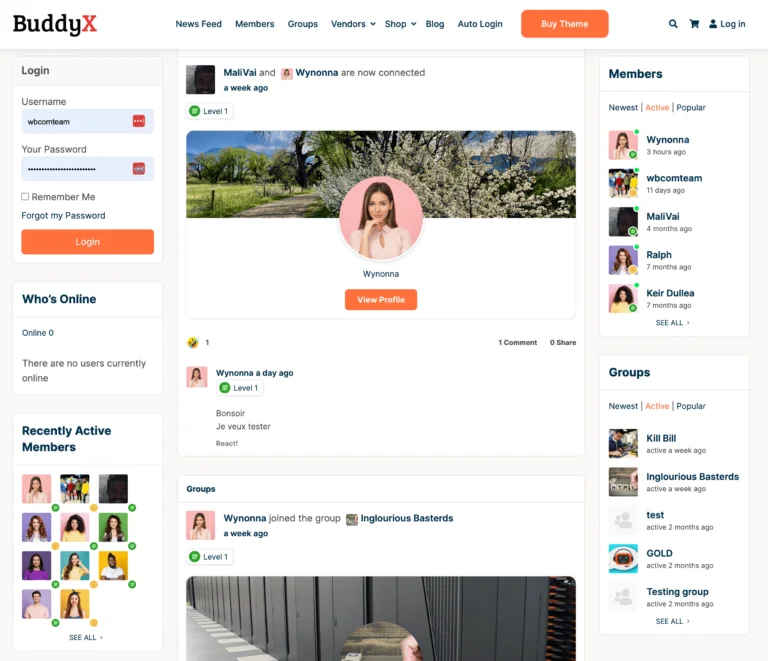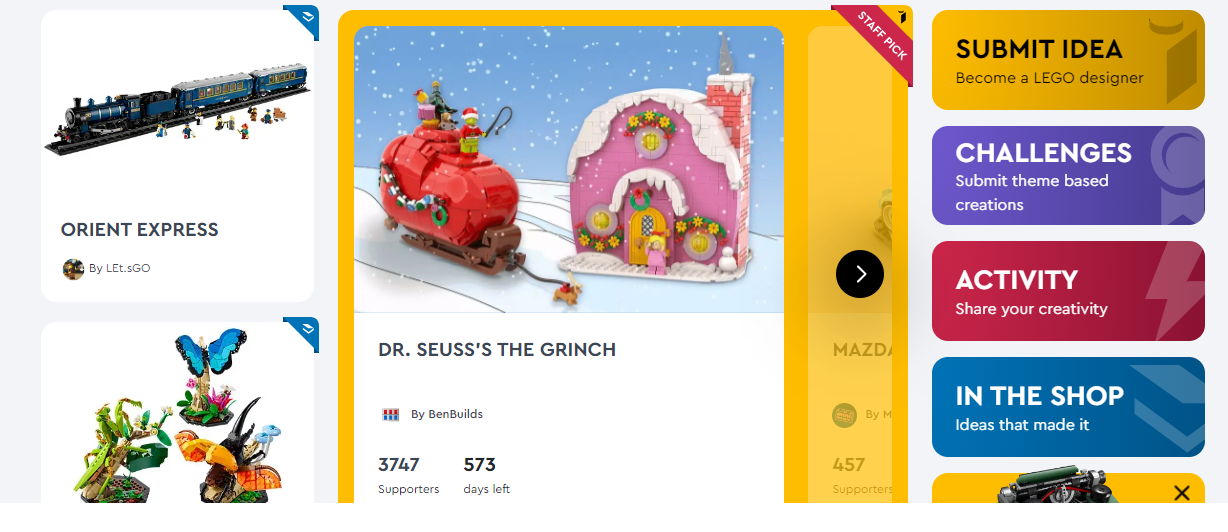Finding like-minded individuals worldwide is now easier than ever. Engaging in meaningful conversations, sharing thoughts on the latest news, and exploring common interests can naturally evolve into the creation of an online community, each with its distinct characteristics.
Distinguishing a community from a group, audience, society, or organization involves key features:
- A community typically involves more than three participants.
- Participants share commonalities in ideas, experiences, or structure.
- Participants either know each other or express a shared interest in getting acquainted.
- While any group can be viewed as a community, not every group qualifies as one.
An online community is an organized group of people communicating and interacting on the Internet. This interaction takes place in various virtual spaces like chats, blogs, social media platforms, forums, web conferences, wikis, multiplayer games, and in-app communities.
Online communities develop their unique identities, complete with celebrities and insider jokes understood only by members. People join these communities to seek answers, and once embraced by the “old-timers,” often become long-term observers.
These communities offer a valuable audience for your project or brand. Understanding their interests and concerns provides insights into what potential customers seek, making it a powerful tool in social marketing.
Create an online Community Website
Checkout BuddyX Theme Demos
Buy the BuddyX Pro theme and Community Bundle Addons and create a highly engaging community platform Today!

Different Kinds of Online Communities
Based on the platform, online communities come in various forms, including forums, blogs, social media groups, gaming communities, and in-app communities. Additionally, communities can be categorized by the method and nature of interaction:
- Interests: Communities centered around shared interests such as science, politics, sports, cinema, etc.
- Geography: Communities reflecting aspects of a specific territory, city, or an entire country.
- Consumer: Thematic communities covering diverse areas like smartphones, household appliances, technology, etc.
- Professional: Communities revolving around specific professions such as business, IT, law, education, etc.
- Direct contact: Platforms facilitating direct communication, including dating websites, apps, and various chat rooms.
- Brand community: Uniting individuals loyal to a particular brand and sharing common interests related to that brand.
Communities can also be differentiated based on experience, collaboration, and competition. For instance, Wikipedia represents a collaborative community where contributors share a common experience. On the other hand, gaming clans or guilds exemplify communities built on competition and shared experiences.
Advantages of Initiating an Online Community
Access to Valuable Information
The primary benefit derived from an online community is access to valuable information. This information can be leveraged to generate buzz around your brand, fostering community growth even without direct involvement. Evidence of these advantages can be observed on brand promotional websites and social media pages, where individuals actively engage in discussions on various topics and challenges.
The paramount objective in establishing an online community is to attract a substantial number of members. This is crucial not only for addressing a well-defined target audience but also for positioning the company as a knowledgeable partner for information seekers. By creating such a community, a company provides a communication platform that facilitates the exchange of experiences.
Moreover, having people spend more time within the community areas of an app or website proves advantageous for a brand, as increased engagement enhances their connection with the brand.
Observing interactions within an online community also enables a brand to identify product shortcomings and consumer preferences. This valuable information serves as a basis for product improvement, aligning with customer needs. Additionally, customization of the product can be tailored based on the profiles of community members.
The diverse array of information found on message boards, private home pages, and community chats serves as an ongoing source of interest for newcomers, prompting them to contribute further content to the community.
Learn how to monetize your online community and earn profit from it.
Steps to Follow to Create a Comunity
Table of Contents
ToggleStep #1: Define a Goal
Initiate by defining a goal. Envision the outcome of establishing a vibrant community. What objectives do you anticipate achieving? Contemplate the following questions:
- What size should the community aim for?
- Who are the participants concerning age, occupation, views, and interests?
- What will draw individuals to the community, and what might hinder their participation?
- What topics will be explored, and to what extent?
Step #2: Research the Market
If you’re in the process of establishing an online community for a brand, conduct thorough research on competitor apps or websites to understand how they organize and oversee their online communities. For example, if you own an e-commerce brand aiming to foster a community among consumers, take a cue from MyGlamm, a beauty and skincare brand. MyGlamm has effectively incorporated GetSocial’s Activity Feeds, offering users a platform to articulate and exchange their thoughts. This strategic approach not only provides the brand with valuable insights into customer opinions but also establishes a direct channel for interaction with their audience.
Step #3: Choose a Platform
Choose an appropriate platform for your community, taking into account factors such as the desired interactions, the nature of your content, and the preferences of your audience.
Here are the some Plateform where you can create your community
-
Social Media Platform
Leverage the extensive reach and familiarity of popular social media platforms. Utilize the platform’s user-friendly interface and widespread user base.
-
Forum Software
Explore the structured environment provided by dedicated forum software. Benefit from organized discussions, moderation tools, and specialized features designed for community engagement.
-
Bespoke Website
Contemplate creating a custom-designed website tailored to your community’s specific needs. Ensure the website aligns with your objectives, providing a unique and personalized experience for your audience.
-
Reign Theme
Consider integrating the Reign theme for WordPress to elevate your community-building experience with dedicated support for gamification plugins and seamless compatibility.
Step #4: Create Content
To give users a reason to engage, a foundation to build upon, and a compelling reason to stay, it’s crucial to establish initial content that forms the nucleus of community growth.
For instance, if your community takes the form of a blog, populate it with articles related to your theme. Consider reaching out to authors from similar blogs for guest posts. Share your own insights and ideas on the topic within your community.
Speak in a conversational tone, as if you’re chatting with a friend. Your articles will set the tone for your visitors. Starting with simple thoughts is more approachable for visitors than attempting to create a masterpiece. Compile links to valuable resources on your topic, making your website, app, or social media page a convenient gateway to other relevant materials.
Step #5: Engage and Retain Community Members
At first glance, establishing a community may appear straightforward and offer the promise of long-term success—almost like hitting the jackpot, right? Unfortunately, numerous pitfalls exist. Simply creating a community isn’t sufficient; the key lies in consistently keeping its members actively involved. In the context of brand communities, engagement is synonymous with encouraging members to stay devoted to the brand and actively contribute to its development. A community that actively engages its members fosters stronger relationships and cultivates lasting loyalty among its members.
What Steps Can You Take to Establish a Flourishing Community?
The intersection of your community and customer base is likely extensive, courtesy of the integration of social media and e-commerce. Thus, it’s prudent not only to provide compelling content but also to establish incentives for active engagement on your platform. This marks the initial crucial stride toward fostering a vibrant community.
Additionally, we’ve compiled eight more recommendations to assist you in constructing and sustaining your online community.
Tip #1: Distinguish yourself with pertinent and distinctive content.
Before initiating, ponder on the distinctive features that could set your community apart. Establish benchmarks and examine existing communities with a similar focus. If identified, pinpoint the unique advantage that distinguishes you from the competition, and emphasize that. Success hinges on staying current, so strive to be ahead of your competition in identifying and addressing topics.
Tip #2: Establish Netiquette Guidelines
Prior to launching an online community, it’s essential to establish your “netiquette” – defining rules and behavioral guidelines that serve as a framework for discussions. In the online realm, where anonymity prevails, users’ inhibitions diminish swiftly. Maintaining a respectful tone is integral to your community, as is fostering open opinion exchange. Ensure the netiquette is easily accessible to all users, providing a separate space for reference at any time.
Tip #3: Maintain Order Through Moderation
Initially, the community may be modest in size, but sustained growth is anticipated. Consequently, moderators become indispensable as the membership expands. Their key responsibilities encompass overseeing the forum and upholding netiquette. Moreover, individuals in these roles should undergo training or possess experience in community management to adeptly address suggestions and critiques.
Tip #4: Optimize Your Community for Search Engine Visibility
Effective search engine optimization (SEO) and app store optimization (ASO) are pivotal in making your community’s content discoverable by search engines and app store users. Crafting precise app store descriptions and meta descriptions tailored for search engines, featuring optimized keywords, is an essential component of any SEO/ASO strategy. Utilizing tools such as Google Analytics and the Google Trends API aids in compiling a list of pertinent keywords.
Tip #5: Promote the Platform Across Social Media
Even if your online community doesn’t primarily operate on a social media platform, it’s advisable to establish a presence there. For instance, promote your platform through a Facebook fan page, leveraging the “share” feature to reach new target groups. Utilize platforms like Twitter to tweet about the latest forum topics, attracting fresh users.
Take the example of the Clockmaker mobile game, which encourages players to join its Facebook community for additional prizes and the opportunity to connect with other players. Simultaneously, players can join an in-game community, enabling them to request lives through chat.
LinkedIn groups also present valuable opportunities. By activating contacts and interest groups relevant to your community, you open avenues for dynamic exchange.
A key recommendation is to actively engage with members—pose questions, provide prompt answers, be accessible, and actively participate in discussions. The vitality of a community thrives on personal exchanges. Your team members can also serve as exceptional brand ambassadors, contributing friendly comments, greetings to customers, or glimpses behind the scenes—all of which are well-received.
Tip #6: Craft a Design with Clear Identity and Recognizable Features
When establishing an online network, the combination of content and appearance plays a pivotal role in determining success. User-friendly clear structures and a distinct design encourage users to spend more time on the platform.
Incorporate your corporate identity seamlessly, utilizing banners and logos to enhance recognition. Additionally, include links on your community pages that direct users to your app, website, online shop, or social media channels. This provides customers with additional avenues to stay connected with your company.
Tip #7: Monitor Your Achievements
User behavior, click count, and duration of stay—these success metrics can be translated into tangible figures through web analysis. Analyzing the data unveils insights into how individuals engage with your brand. As the community operator, it’s crucial to establish pertinent key performance indicators (KPIs) before launch and consistently gather them.
Some Successful Online Communities
1. Reddit- Online Community

This platform stands as one of the most extensive online communities globally, serving as a massive discussion forum where members can engage in conversations spanning a wide array of topics, from adorable kitten memes to complex discussions on cloud computing. Reddit operates through subreddits, which are subcommunities focused on specific themes, and within these subreddits, users contribute posts that can be interacted with through comments and shares. With over 130,000 subreddits, each governed by a moderator, Reddit was established in 2005 and has since become the 18th most visited website globally and the 7th most visited site in the United States.
2. Airbnb: Host Community- What is an Online Community
Airbnb boasts an online community dedicated to hosts, boasting a membership exceeding one million individuals who have collectively contributed over a million posts. The landing page provides a glimpse into the ongoing discussions within the community, fostering trust by showcasing lively conversations among fellow Airbnb hosts. Here, hosts engage in dialogue about local matters, share insights on enhancing their hosting practices, and seek support from the community.
Also Read: Smart Strategies for Creating a Service Business Website
3. Buffer Community
The social media management platform, Buffer, initiated its online community on Slack, amassing a membership of over 4,000 individuals. In 2019, Buffer transitioned the community to a dedicated platform hosted on their website. The community’s landing page highlights opportunities for members to engage in creative discussions on Twitter, connect with new people within the community, pose questions, and explore valuable resources. Notably, community members have the chance to take on the role of a community host on Slack twice a year, enabling them to facilitate discussions, welcome newcomers, contribute to special projects, and more. Monthly Zoom meetings also offer additional avenues for participation.
4. Lego Ideas- Online Community

Enthusiastic Lego enthusiasts have the opportunity to share their creative Lego construction ideas through the brand’s online community. Within this community, members can actively participate by voting for each other’s submitted concepts. This engaging approach by Lego ensures a continuous connection with its customers, sustaining their interest in the product. The process becomes a source of excitement as individuals revisit the website to monitor the votes their ideas accumulate. Furthermore, the incentive of rewarding winners with a percentage of product sales adds an extra layer of motivation for community participation.
Also Read: 7 Steps to Building an Online Community
5. Nike Run Club
The Nike Run Club, a complimentary app, transforms the act of running into a gamified experience, rewarding users with medals for achieving new records and upgrading their profiles after each run. Nike has successfully tapped into the desire of enthusiasts, turning every run into an opportunity to become not just runners but proud owners of medals. The app goes beyond simple tracking by offering users the option to embark on audio runs guided by a coach or an engaging individual, providing an avenue to acquire new information.
Conclusion on What is an Online Community
Throughout history, individuals have naturally gravitated towards forming communities, and the digital landscape of the Internet is no exception. An online community serves not only as a virtual gathering space for like-minded individuals but also as a potent marketing tool to elevate and promote your brand.
However, the endeavor of building an online community requires a strategic and careful approach. It is a two-fold process where you initially invest effort into nurturing the community, and, in turn, the community becomes an influential force working in favor of your brand. Our provided tips are intended to serve as a compass, guiding you in the right direction as you embark on the journey of cultivating a thriving online community.
Interesting Reads:
Ways A Branded Community Can Help Business
Promote Your Brand By Creating Online Community Website
Marketing With Social Media: Establish Relationship with Your Audience






